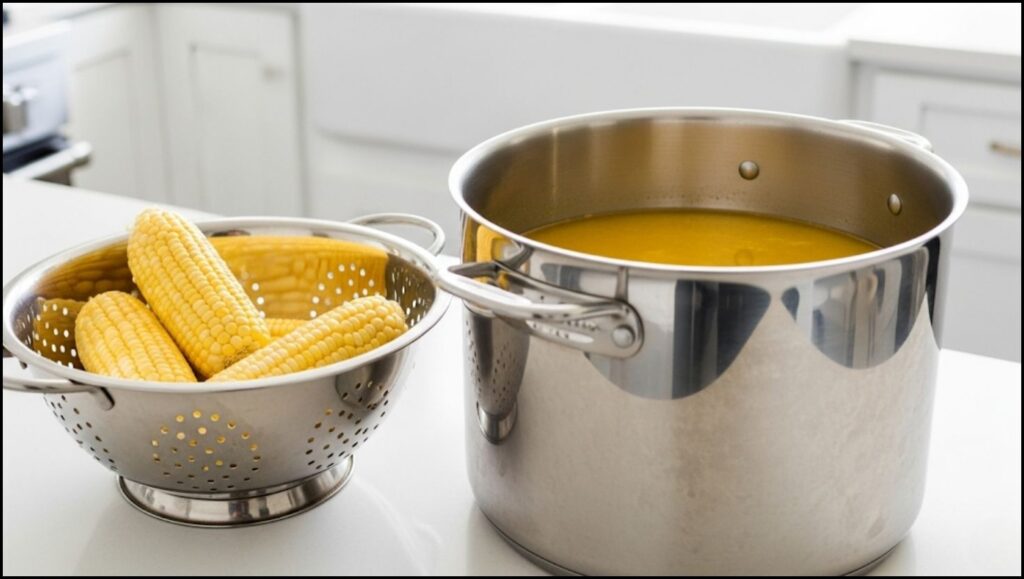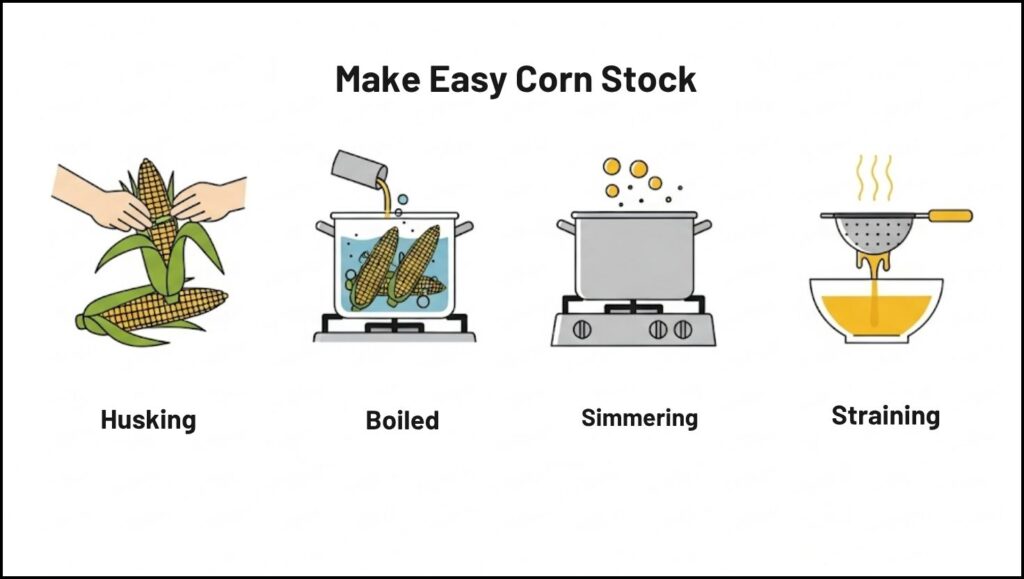
A culinary technique once confined to resourceful chefs and thrifty grandmothers is entering the mainstream kitchen, driven by a growing interest in flavor and sustainability. Making easy corn stock from leftover cobs transforms a common kitchen scrap into a versatile, savory liquid, adding depth to countless dishes while championing a zero-waste ethos.
This simple process, requiring little more than corn cobs and water, is gaining recognition for its ability to produce what many chefs call “liquid gold.” The resulting stock captures the sweet, earthy essence of fresh corn, providing a superior flavor base for everything from summer chowders to creamy risottos.
The Rise of a Sustainable Staple
The surging popularity of corn stock is closely tied to the broader zero-waste cooking movement. As consumers and professional chefs become more conscious of food waste, they are finding innovative uses for parts of ingredients that are typically discarded. Corn cobs, rich in residual sugars and flavor compounds, represent a prime example of this culinary philosophy.
“Using every part of the vegetable isn’t about austerity; it’s about discovering where the flavor is hiding,” said Dan Barber, the acclaimed chef of Blue Hill at Stone Barns and a leading advocate for sustainable food systems, in a recent culinary journal interview. “The cob holds the essence of the corn. To throw it away is to throw away flavor.”
This sentiment is echoed in kitchens worldwide. The practice aligns with a desire for more authentic and less processed ingredients, allowing home cooks to control the sodium and additives often found in commercially produced broths.

How to Make Easy Corn Stock: A Step-by-Step Guide
The method for creating corn stock is valued for its simplicity. While recipes vary slightly, culinary experts agree on a core process that is nearly foolproof.
Core Ingredients and Method
The primary ingredients are simply the cobs from several ears of corn and enough cold water to cover them. According to a guide from America’s Test Kitchen, a renowned culinary research organization, placing the cobs in a large pot and covering them with about two inches of water is the ideal start.
The mixture is then brought to a gentle simmer over medium-high heat. Crucially, the heat should be reduced to maintain a bare simmer, not a rolling boil. Boiling can cause the stock to become cloudy and can cook off some of the more delicate aromatic compounds. A simmering time of 45 minutes to one hour is sufficient to extract the flavor, as culinary publications recommend. Afterward, the stock is strained through a fine-mesh sieve and is ready to use or store.
Expert Techniques for Deeper Flavor
To develop a richer, more complex flavor, many chefs recommend roasting the cobs first. Spreading the cobs on a baking sheet and roasting them at 400°F (200°C) for 20-30 minutes until they are lightly browned and fragrant caramelizes their natural sugars.
“You’re creating layers of flavor through the Maillard reaction and caramelization before you even add water,” explains J. Kenji López-Alt, a food writer and chef known for his scientific approach to cooking, in his book “The Food Lab.”
Aromatics can also be added to the pot. A halved onion, a couple of bay leaves, a few black peppercorns, and parsley stems are common additions that complement the corn’s sweetness without overpowering it.
The Science of Flavor: Why Cobs Create Umami Flavor
The transformation of water into a savory stock is a matter of basic food science. Corn cobs are porous and fibrous, but they retain significant amounts of starch and sugars even after the kernels are removed.
When you gently simmer the cobs, you’re essentially steeping them like a tea,” says Dr. Ann-Marie Manz, a food scientist at the Cornell University College of Agriculture and Life Sciences. “The heat and water work together to dissolve residual sugars, which provides sweetness, and break down starches, which gives the stock body. Furthermore, corn contains glutamic acid, a source of the savory taste known as umami flavor. This combination of sweet and savory notes makes corn stock a uniquely versatile ingredient in a cook’s arsenal.
Culinary Applications: Beyond Basic Soup
While corn stock is a natural base for chowders and vegetable soups, its uses extend much further. Its subtle sweetness and light body make it an excellent cooking liquid for grains and legumes.
- Risotto and Polenta: Using corn stock instead of water or chicken broth imparts a seasonal, sweet flavor that perfectly complements these creamy corn-based dishes.
- Poaching Liquid: Its delicate flavor makes it an ideal medium for poaching fish, shrimp, or chicken breasts.
- Sauces and Glazes: The stock can be reduced down to a syrupy glaze, concentrating its flavor for finishing sauces.
“A great stock is the foundation of so much of what we do,” writes Samin Nosrat in her seminal book, “Salt, Fat, Acid, Heat.” By mastering a simple technique like easy corn stock, cooks can elevate their dishes from good to extraordinary.
As the trend towards mindful consumption continues, the simple act of saving corn cobs from the compost bin is becoming a hallmark of a modern, resourceful kitchen. It serves as a reminder that value and flavor can often be found in the most unexpected places.
Why Princess Diana’s Breakfast Embodied a Modern Approach to Health
